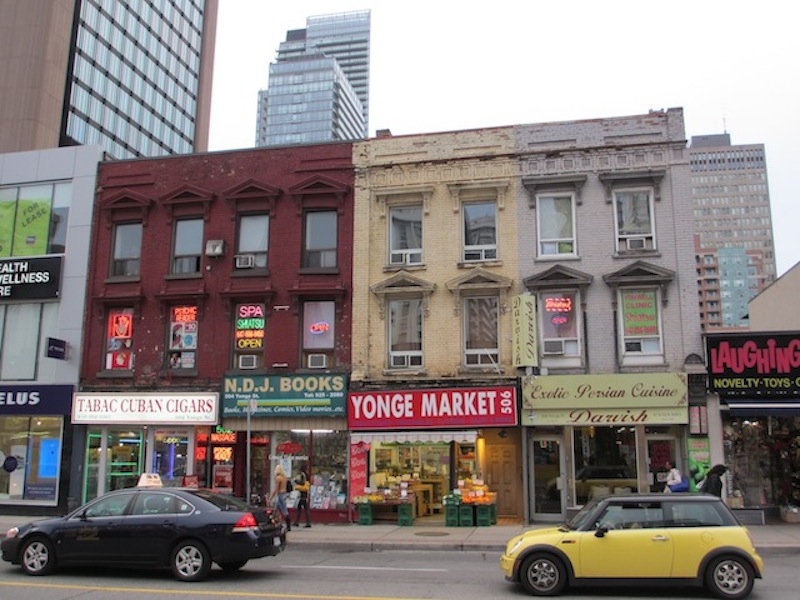Submitted by WA Contents
Multicultural Planning, Citizen Activism, and the Lived Experience of Urban Place
United Kingdom Architecture News - Jun 08, 2014 - 13:01 3847 views
Dean Saitta presents a report about the conference,the Society for American City and Regional Planning History which held in Toronto, October 4-6, 2013.

My title identifies three powerful themes in contemporary urban thought that were highlighted at last fall’s biennial conference of the Society for American City and Regional Planning History held in Toronto, October 4-6, 2013. What follows is a lightly revised report on the conference that was just published in the International Journal of E-Planning Research. A pdf of the original IJEPR report is also available free of charge here.
The Society for American City and Regional Planning History (SACRPH) held its biennial conference in Toronto on October 4-6, 2013. I was invited by incoming SACRPH President Joseph Heathcott to chair a session on “scholarship blogging” and thereby contribute an anthropological perspective on urban planning history. Below is a review of the conference based on sessions I attended over the course of three days. These sessions spoke to my particular anthropological interest in the relationship between urban planning and cultural diversity.
The conference began with an opening address by the outgoing president of the Society, Lawrence Vale, entitled “Twice-Cleared Communities: The North American Struggle For (and Against) Public Housing.” Vale discussed two prominent examples of public housing projects that were built in the mid 20th century, and then demolished 50 years later once the projects came to be regarded as “slums.” One was the Techwood/Clark Howell Homes in Atlanta, and the other was Cabrini-Green in Chicago. “Twice clearing”, however, is a widespread phenomenon. Sean Purdy of the Universidade of São Paulo discussed Vale’s presentation with respect to Regent Park in Toronto, the host city’s best example of a twice-cleared community. The provision of adequate public housing remains a planning challenge across North America. People still want access to public housing despite its checkered history and the associated social stigma. Boston and Buffalo were identified as cities that are doing better than most in providing affordable housing without displacing residents.

Yonge Street, Toronto (D. Saitta)
The conference’s plenary session considered the question of “Toronto: An American City?” Four participants addressed the distinctive elements of Toronto’s urban landscape, the immigrant impact on neighborhoods, how those neighborhoods have come to reflect growing social inequality, and the challenges of urban sprawl. Over the course of its history Toronto has exhibited less formal planning than most American cities. Historically this “light zoning” had a number of virtues. It allowed new immigrants to form welcoming enclaves in the city center while keeping consumer markets close at hand. It also kept housing affordable and minimized spatial inequalities of income. However, things have been changing in the post-World War II period, in keeping with broader American trends. Slab apartment towers—identified as a quintessentially Canadian form of suburban housing—came to dominate the metropolitan landscape. In the 1970s suburbs began to replace the city center as the primary reception area for immigrants. Despite efforts in the 1970s and 1980s to maintain mixed housing in the center the “ethno-spatial” divide has been increasing, with black citizens especially segregated. Since 2006 New Urbanism has become the dominant approach for regenerating suburban communities, given that high-rise suburbs are not conducive to immigrant business building. All of these trends are paralleled in the United States. Thus, Toronto is, and isn’t, an American city. The plenary session was extraordinarily helpful in contextualizing a city that is often celebrated as one of the world’s most progressive and multicultural....Continue Reading
Dean Saitta is the author and editor of Intercultural Urbanism. His posts sometimes appear at Sustainable Cities Collective. Dean is Professor of Anthropology, Chair of the Department of Anthropology, and Director of the Urban Studies program at the University of Denver. His signature course for this program is Culture and The City. He lives on a City Beautiful parkway just off Colfax Avenuein Denver. His personal website is at http://portfolio.du.edu/dsaitta.
